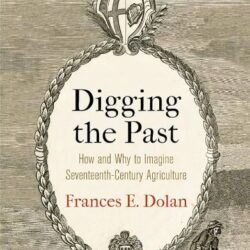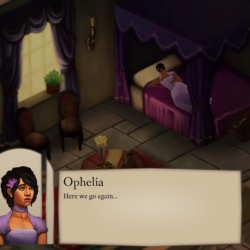The goal of Digging the Past is stated early with the question, “Is it possible to approach the seventeenth century, in its failed proposals and successful ventures, as a resource for imagining future agriculture in fruitful ways?” Frances E. Dolan seeks to answer this question by offering “a fine grained case study that proposes to enrich our understanding of the value of the past. (page seven) The method consists of examining the letters, diaries, notebooks, botanicals, pamphlets, as well as plays, poems and ‘how to’ guides. Among the topics subsequently covered are histories of food and work, literary criticism of the pastoral, histories of elite and vernacular science, of reading and writing practices and so on. This leads to an examination of agricultural topics such as composting and soil amendment, local food, natural wine and hedgerows. Along the way, we also encounter such varied topics from Shakespeare to cannibalism. An extensive and well documented bibliography testifies to the wide-ranging scholarship that supports this book.
Tag: 15th-17th centuries
Game Reviews: Astrologaster. Nyamyam, 2019. Elsinore. Golden Glitch, 2019.
Digital literature, in which a fictional tale unfolds while a player witnesses but minimally intervenes in its progress, is an obvious example. Two games which invoke early modern England, Elsinore (Golden Flitch, 2019) and Astrologaster (Nyamyam, 2019), and which are both anchored upon the central motif of a book, are especially self-conscious examples of such bookish play – and ones which may challenge SHARP members and their students to see reading and its concurrent activities anew.
Stephen Orgel, Wit’s Treasury: Renaissance England and the Classics.
If there are any preconceived notions of a poet who refrains from sassy defamation of a critic or an academic who manages not to say something controversial, Wit’s Treasury shatters such notions. At the heart of the book is the organic development of the understanding and appreciation of literary classics, many of them appearing as various translations throughout the Jacobean and Elizabethan periods and beyond. The book gives special attention to adaptations of the classics rendered as poetry, dramatic performance, and other written and visual modes of art. Not only were the classics, such as the narrative and philosophical writings of the ancient Greeks and Romans, translated in ever-more-updated editions with plentiful illustrations, produced for the elite and popular culture, but the trappings, the settings, and the aesthetics of “the classics” also rubbed off on the books and plays of the whole Renaissance.
Lesser, Zachary. Ghosts, Holes, Rips and Scrapes: Shakespeare in 1619, Bibliography in the Longue Durée. Philadelphia: University of Pennsylvania Press, 2021.
The central methodological claim of Lesser’s case study is that an attention to the long and disparate lives of each individual copy helps us to better understand the making of the Jaggard Quartos and allows us to complicate the studies conducted by New Bibliographers, whose bibliographic descriptions and attendant explanations of the texts’ extant forms still condition contemporary approaches to bibliography. By carefully studying individual copies across long periods of time, Lesser provides a fuller picture of the material conditions of their production and use.
Pentiment: An Interview with Josh Sawyer
Pentiment (Obsidian 2022, $19.99, Xbox and Steam), the new narrative game from Obsidian, is a piece of media that gets…




